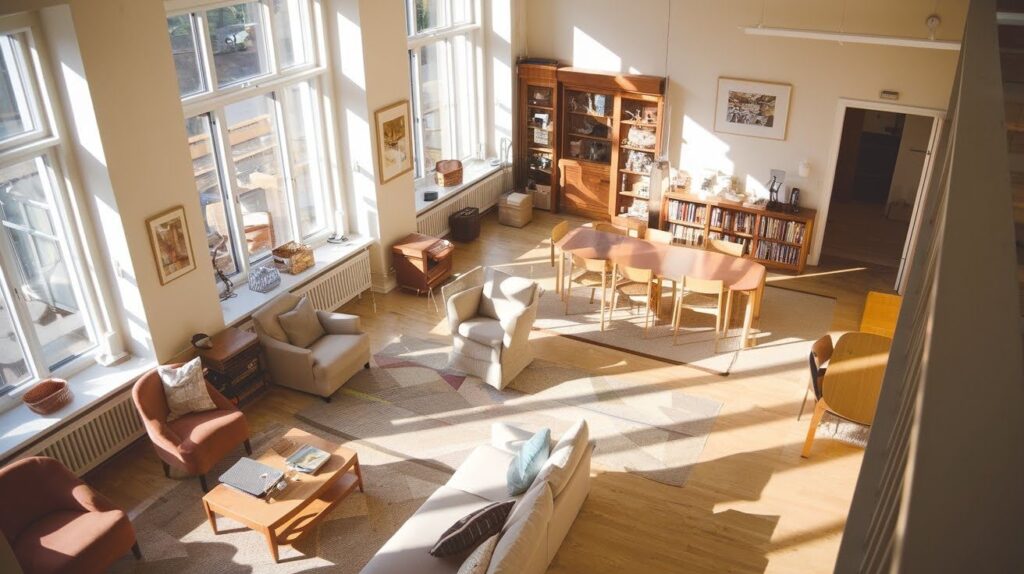Wondering how to design a home renovation homenumental? You’re in the right place.
I’ve helped homeowners through major renovations. I know exactly what works and what doesn’t.
This article covers everything you need. Seven detailed steps. Common mistakes to avoid. Real solutions for real problems.
You’ll learn how to plan your vision and budget, choose materials that last, avoid costly mistakes, and create spaces that wow.
I’ve seen too many renovations fail because of poor planning. You won’t make those mistakes. My system works. I’ll walk you through each step. No confusing terms. No overwhelming lists.
Just practical advice that creates amazing results.
Your dream home starts with the right approach. Let’s build something truly homenumental together.
Understanding the ‘Homenumental’ Approach

Think of homenumental as monumental meets home. It’s bigger than just renovation.
This approach focuses on creating spaces that feel important. Spaces that tell your story. Spaces that make you happy every single day.
Here’s what makes it different, most renovations fix problems. Homenumental renovations create experiences. Most updates follow trends. Homenumental designs create timeless impact.
I’ve seen too many homeowners spend thousands only to feel underwhelmed. That stops today.
How to Design Home Renovation Homenumental: Step-by-Step Guide
Ready to start? Let’s break this down into manageable steps. Each step builds on the last one. Don’t skip ahead.
Step 1: Define Your Vision and Lifestyle Goals

Start with the big picture. Grab a notebook. I’m serious about this part. Write down how you want to feel in your renovated space. Not what you want it to look like. How you want to feel.
Do you want to feel calm? Energized? Connected to family? Inspired to cook? Now think about your daily routines.
Where do you spend most of your time? What activities matter most to you?
If you love hosting dinner parties, your kitchen island becomes important. If you work from home, that office space needs special attention.
Here’s a quick exercise.
Walk through your current home with fresh eyes. What frustrates you most? Write it down. What makes you smile? Write that down too.
These insights become your foundation.
Step 2: Plan the Budget with Long-Term Value in Mind

Money talk time. But not the scary kind. Think investment, not expense.
I always tell my clients to plan for three budget levels:
- Must-have items (your absolute priorities)
- Nice-to-have items (things that would be amazing)
- Dream list items (if money were no object)
Start with your must-haves. These usually cover structural issues, major systems, and core functionality. Then add nice-to-haves if budget allows.
Here’s my tip: Spend more on things you can’t easily change later. Plumbing, electrical, flooring foundations. These are your bones.
You can always upgrade light fixtures and paint colors down the road.
Step 3: Select a Cohesive Design Theme

This is where magic happens. Your homenumental renovation needs a unifying thread. Something that connects every space.
But here’s the thing: It doesn’t have to be complicated.
Maybe it’s a color palette that flows throughout. Maybe it’s natural materials like wood and stone. Maybe it’s clean lines with warm textures.
I’ve seen beautiful homes built around simple themes:
- Scandinavian modern (clean, bright, functional)
- Warm industrial (exposed brick, soft metals, cozy textiles)
- Coastal contemporary (natural light, ocean colors, relaxed style)
Pick something that resonates with you. Not what’s trending on social media. Your theme should feel authentic to your personality.
Step 4: Smart Space Planning for Functionality

Now we get practical. Function comes before beauty. Always. I can make the most gorgeous kitchen in the world. But if you can’t move around it comfortably, it fails.
Think about traffic flow. How do you move from room to room? Consider sight lines. What do you see when you enter each space?
Ask yourself these questions:
- Do I have enough storage?
- Are my most-used items easily accessible?
- Can multiple people use this space without bumping into each other?
- Does natural light reach where I need it most?
Sometimes small changes make huge impacts. Moving a doorway. Removing a wall. Adding a window.
Step 5: Choose Durable and Sustainable Materials

Quality matters more than you think. I’ve learned this the hard way. Cheap materials look cheap. And they wear out fast.
But expensive doesn’t always mean better either. Look for materials that balance durability, beauty, and sustainability.
My recommendations:
- Floors: Hardwood, luxury vinyl plank, or quality tile
- Counters: Quartz, granite, or butcher block
- Cabinets: Solid wood or high-quality plywood
- Paint: Low-VOC options from trusted brands
Think about maintenance too. That gorgeous white marble might look amazing in photos. But if you cook a lot, it might drive you crazy.
Step 6: Blend Personal Touch with Professional Expertise

Here’s where you decide what to DIY and what to hire out. Be honest about your skills. I love DIY spirit. But some things need professionals. Electrical work. Plumbing. Structural changes. These aren’t YouTube projects.
But there’s plenty you can do yourself:
- Painting (with proper prep)
- Installing shelving
- Simple tile work
- Decorating and styling
The key is knowing when to step back. Your homenumental renovation should showcase your personality. But it also needs to be safe and functional.
Consider hiring professionals for design planning, major installations, anything involving permits. Keep for yourself personal touches, decorative elements, organization systems.
Step 7: The Final Touch: Styling and Staging

We’re almost done now. This is where your house becomes your home.
Start with the basics: lighting, window treatments, and key furniture pieces.
Then layer in personality.
Think about these elements:
Art and photography (your memories and inspirations), Plants and natural elements (they bring life to any space), Textiles (pillows, throws, rugs add warmth and color), Personal collections (books, pottery, whatever speaks to you)
Don’t rush this part. Live in your space for a few weeks first. You’ll find what’s missing and what works perfectly.
Common Mistakes to Avoid in a Homenumental Renovation
Let me save you some headaches. I’ve seen these mistakes countless times:
- Following every trend instead of choosing timeless elements
- Ignoring natural light and missing its power to change everything
- Choosing form over function without considering your actual lifestyle
- Not planning enough storage which kills even beautiful designs
- Rushing decisions instead of taking time to make smart choices
Conclusion
I’ve shared everything I know about designing home renovation homenumental style. You now have my complete system. Seven steps. Mistakes to avoid. Real solutions that work.
This isn’t just about renovation. It’s about creating your dream home. A space that tells your story. A space that brings daily joy.
Remember to start with your vision first, plan your budget carefully, choose quality materials, avoid common mistakes, and trust the process.
I believe in your success. You have all the tools now. Your change starts with the first step. Pick one room. Define your vision. Begin today.
Ready to create something truly homenumental? Start planning your project now. Your future self will thank you for it.
Frequently Asked Questions
How long does a homenumental renovation typically take?
Most homenumental renovations take 3-6 months for major projects. The timeline depends on your scope, permits needed, and material availability.
What’s the average cost for a homenumental home renovation?
Expect to invest $50,000-$150,000 for a full homenumental renovation. Your actual cost depends on home size, material choices, and local labor rates.
Can I do a homenumental renovation on a tight budget?
Absolutely! Focus on high-impact changes like paint, lighting, and fixtures first. You can achieve homenumental results by prioritizing the right elements over expensive materials.
Should I hire a designer for my homenumental project?
I recommend hiring a designer for major structural changes or whole-home renovations. For single rooms, you can often succeed with careful planning and these guidelines.
How do I know if my renovation idea is truly homenumental?
Ask yourself if the change creates lasting impact and reflects your personality. If it makes you excited to come home every day, you’re on the right track.

